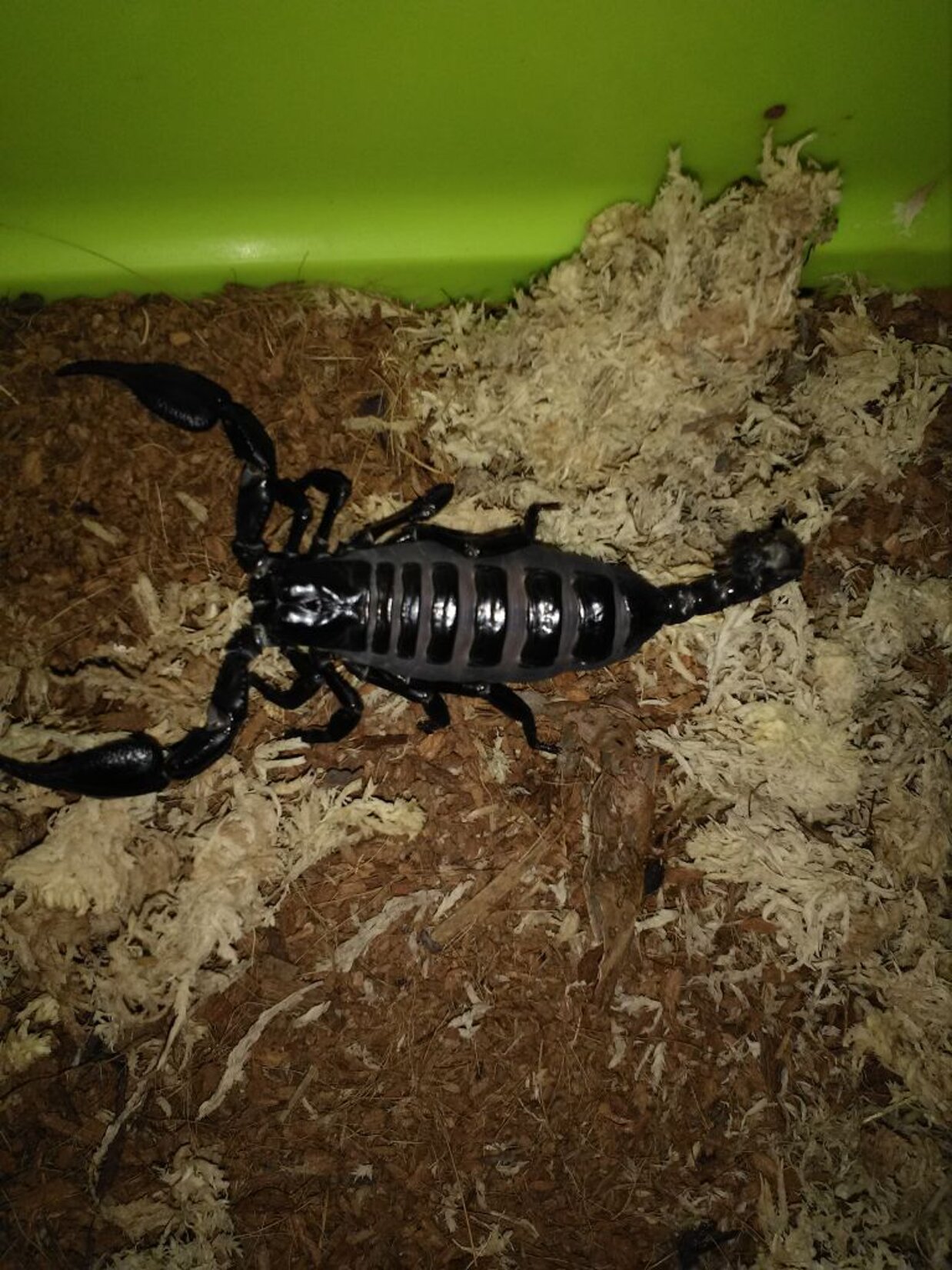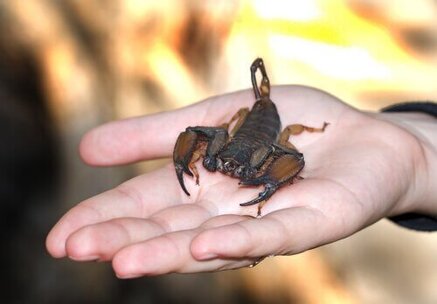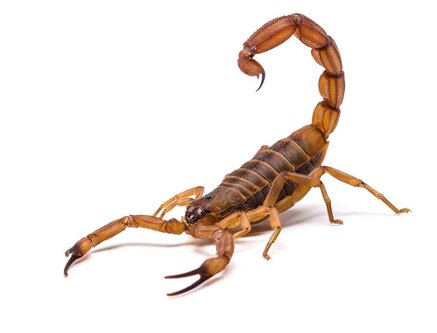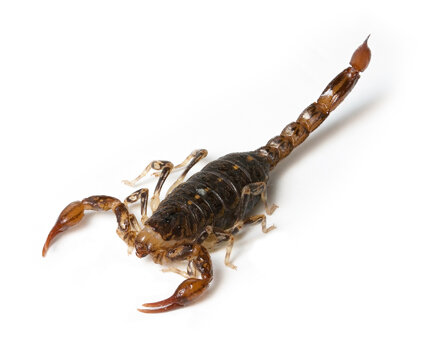Ecopiakos Ecological Solutions - VAT 05534520878

Scorpios
Scorpions are animals that are mainly active at night, when they hunt insects, spiders, and other small animals. Prey are grabbed with the "claws" (called "pedipalps") and shredded with the chelicerae; larger prey are first paralyzed with the venom from the stinger. The female produces young that are already active, semi-transparent, identical to adults, which she carries for a few days on her abdomen.
To date, in most of the Italian territory, only the genus Euscorpius (family Chactidae) is present, with 4 subgenera and 12 species, of which the most widespread are E. italicus and E. flavicaudis; however, the classification of the species in this genus, which are very similar to each other, is subject to continuous review and updating by expert taxonomists. Their size averages around 3-4 cm, depending on the species. The coloration of the species present in Italy is generally dark, but E. flavicaudis can be distinguished from the others by the usually yellowish color of its stinger and limbs.
For completeness, it is also appropriate to mention the species Buthus occitanus (family Buthidae) because although it is present in Spain, southern France, and other European regions, it has occasionally also been reported in Liguria. The sting of this scorpion is particularly painful compared to that of the Euscorpius genus.
Features
Being stung by a scorpion is a rather rare event in Italy, but not impossible. These are animals inclined to hide, but if trapped or disturbed, they can sting humans whom they consider predators. In most cases, the effects of a Euscorpius sting are comparable to those of a wasp or bee sting in a healthy, non-allergic (normosensitive) adult.
However, to the erythema caused
Generally, scorpions do not cause real infestations. The most effective method to counter the presence of these arachnids is to avoid providing them with shelters by accumulating materials (piles of wood, boxes, etc.). In the case of severe infestations in domestic environments, a residual-action insecticide can be used, like those used against cockroaches.
Scorpions are not true pest arthropods but rather animals that can cause occasional discomfort. In fact, as an extreme defense weapon, the scorpion can sting with a venomous stinger (called telson) located at the end of the abdomen, anyone who inadvertently disturbs it. This well-known peculiarity is the reason for concern about these arachnids in domestic or work environments.
Scorpion venom usually has a low or at most moderate level of toxicity, but in children it could cause more intense discomfort. In this latter case, it is advisable to call for an ambulance.
It is advisable to seek medical assistance especially if the scorpion appears potentially dangerous, if the victim is an elderly person or someone with heart or lung problems, or if other symptoms appear besides pain and mild swelling.
Cold helps slow the spread of venom, reduces swelling, and numbs the area to pain. Therefore, it is recommended to keep a cold pack or an ice bag on the scorpion sting for 10-15 minutes at a time, waiting the same amount of time between applications. This treatment is most effective if performed within two hours of the incident.
It is worth remembering that, although they may arouse fear or disgust in some, in reality these small predators can feed on pest insects in homes.



How to act
Call us and we will help you by identifying (after a careful inspection) where they are hiding and planning a specific intervention for your situation.
Ecopiakos Ecological Solutions - VAT 05534520878
